Issue Number 60, Spring 2023
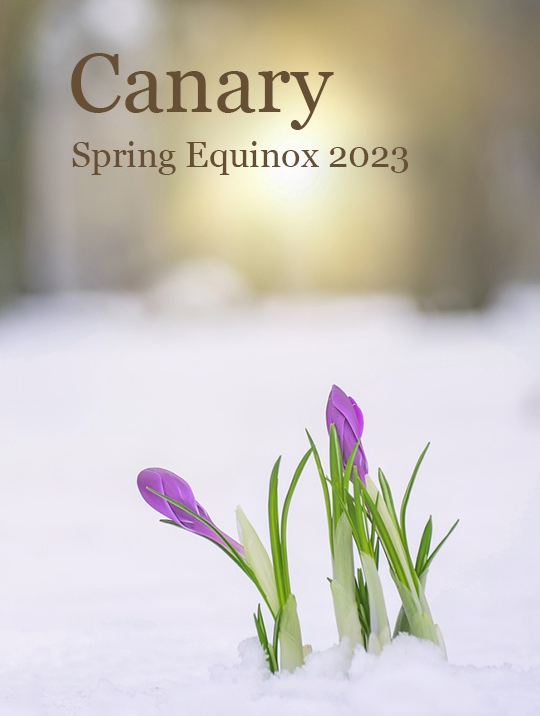
Contents
- Premonition by Maggie Wadey
- The Nests by Annie Cody Holdren
- Field Trip by Paul Willis
- Erotica for the Sea Turtle Swimming into the Glass of her Tank by Skye Gilkerson
- Inundation Incantation by Gerard Sarnat
- Age by Mike Dillon
- Three Hours in the Morning by Mike Dillon
- The Sound of Living Water by Nicholas Crane Moore
- Close to Satsop River by Kate Stannard
- Trash Birds by Shannon Finck
- Still Pink Form: A Meditation on Hunger by Paul W. Jacob
- Where The Yellowstone Flows: Billings by James Johnson
- Saying Goodbye by Sally Nacker
- Unmarked Trail by Prabu Vassan
- Accidental Bees by Anna Sims Bartel
- Bean Germination by Anna Sims Bartel
- Requiem by Eric le Fatte
- Start by Maxine Susman
- Destination by Maxine Susman
- Cardinal Direction by Shangri-La Hou
Archives: by Issue | by Author Name

Premonition
by Maggie Wadey
From Maggie’s desk in Hackney, East London, she looks across a park to the Olympic Site, where there's a sense of a big open sky and the Thames River, with its wide flat estuary, being within easy reach. In her narrow, city garden she has grey squirrels, foxes, a lot of cats, 'cockney' sparrows, crows and green parakeets.
A minatory late-winter sunset.
Undressed, the stark, lit-up bones of my silver-birch are
suddenly flamingo-pink, a transformation suggesting something
more like thought than matter, as if the tree has new ideas
about itself, flamboyant and provocative, inspired perhaps
by the unlikely sight and shrieking calls of emerald-bright parakeets
here, amongst the ash and leaning willow, thousands of miles
north of their natural habitat, suggesting other, tropical ways
of being, their presence shrinking space-time, like a window
in the mind sliding open and memory’s deep undertow
rehearsing a new colour-palette, new weather.

© Maggie Wadey
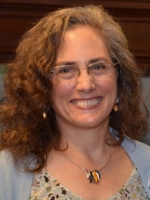
The Nests
by Annie Cody Holdren
Annie lives midway between Monterey and Salinas, California, on the occupied lands of the Rumsen Ohlone. Her home perches on an oak-covered hillside that drains into Toro Creek, a tributary of the Salinas River (Rumsen: ua kot taiaua?orx).

Grandpa thought it was
a wasp’s nest hanging
from the wire above our cabin,
so he shot it
with pesticides, with force
enough to bring it down.
We girls watched
from behind the window as
he picked it up,
commanded us
to come outside.
We stalled until he shouted,
“God damn it!”
“God damn it
to hell,” he continued
as we looked
inside the nest:
two eggs, small
as my fingernails.
“A hummingbird’s”
the Admiral said,
and dismissed us.
Years later he sent
my sister to Japan.
He commissioned her
to plant a pine,
install a plaque
at Yakasuni Shrine.
It was the first
American memorial,
inscribed as he’d
directed:
For Japanese Submariners
from the U.S.S. Taylor’s
Officers and Men.
Last Spring I went to see it.
The plaque was weathered, but in the tree
birds raised their young.
© Annie Cody Holdren

Field Trip
by Paul Willis
Paul lives among live oaks, sycamores, and chaparral at the foot of the Santa Ynez Mountains on the central coast of California, where he built and maintained two miles of trail on land owned by the college where he taught for many years.

Another class, another circuit of this trail,
half-cleared, Sisyphean snake.
Still, a journey of a wandering hour,
a sinuous feast.
Banks of nasturtium in full orange shock,
just starting to dissipate, the lemon-flavored
sourgrass now shriveled to a crust.
Wild turnip sauced with its cousin, wild mustard.
In the canyons, burnt oaks
and skeletons of eucalyptus, our wildfire
now eighteen months in the past.
Garden hoses cross the path
to water new tints of green:
mugwort, hummingbird sage.
And the sound of construction nearby,
bulldozers backing up to their own passing bells.
Everywhere, evidence of spring rains
through a charred and open canopy,
purple thistles eight feet high,
slender giants on the earth.
© Paul Willis

Erotica for the Sea Turtle Swimming into the Glass of her Tank
by Skye Gilkerson
Skye is a visual artist who was raised in the endless quiet of the Great Plains and slowly made her way to the Hudson Valley, where her house perches on a hill overlooking Rondout Creek.

She eats regularly and will never be harmed, the volunteer assures me. I watch with recognition as she paddles against the glass of her tank, drawn every few years to imagined migrations.
Born into a laboratory study, they explain, she cannot survive the wild. It’s like making zoom calls from the cubicle, we laugh.
Her eyes slowly blink as she pushes water this way and that way, alone in her cage, unfolding diamond rainbows under florescent light, every cell directing her to find him, oceans away, claw marks beneath her shell, his flippers at her neck as she carries them both to the surface for air.
© Skye Gilkerson
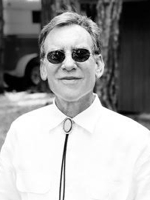
Inundation Incantation
Among the Museum of Things I Wanna Forget but Cannot
by Gerard Sarnat
Gerry lives in Portola Valley on the San Francisco Peninsula on the eastern slope of the Santa Cruz Mountains. The Windy Hill Open Space Preserve is a large part of the town's southwest side, and the north side of the town borders Jasper Ridge Biological Preserve.

Knee-deep in water, Rebecca and her son -- lucky not to be an orphan now -- worked land dotted with decomposed stalks bent from the force of surging mud. “It’s all rotten,” she said, holding a large pan filled with discolored sludgy corn that she hoped to mill after it dried.
But these new inland oceans seem not unique to those Janeiros in Mozambique* or “elsewhere” since 30 USA states’re predicted to experience floods already pummeling livestock/ harvests of Midwest farmers who can least afford it in the face of current tariffs and low crop prices.
With Great Plains early-melting blizzards, cyclones plus typhoons as well as Dorothy’s usual tornados, folks within the Missouri-Mississippi River basins, where towns fought but failed to save breached levees, admit, “Despite airdropped hay, it’s over for us.”
Roads impassable, bridges swamped essentially puts hardworking Iowa plus Nebraska citizens under house arrest --- except for those few very rich Big Agra businessmen with helicopters to travel around buying out bargain-basement single-family farms.
Bringing global warming back home, the 2017 U.S. Geological Survey report says between 1/3 - 2/3 of Southern California beaches will succumb to sea-level rise by end of this century unless fossil fuel emissions are significantly reined in. To be painfully specific, “Zuma and Redondo [where my wife and I have a beachfront condo], and Del Mar, among many others, could all then disappear. They will likely be “completely eroded (up to existing coastal infrastructure or sea-cliffs)” with neighborhoods swallowed.
With the youngest of five grandchildren just born, last night three generations committed a huge chunk of our assets to seed climate change projects. I am trying to contact a college dorm-mate who lived across the hall: since he is Al Gore, we look forward to getting advice about wise stewardship.
© Gerard Sarnat
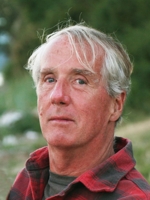
Age
by Mike Dillon
Mike lives in a small town on Puget Sound within view of the Olympic and Cascade mountain ranges and a few miles from Chief Seattle's grave.

“Keep on this path,” the stranger said.
“There’s a grove of white hawthorn straight ahead.
It’s like a thicket of waterfalls.”
I thanked the man. And glanced at the sunlit path
into the woods. And glanced at my watch.
And turned back.
Next May, I thought. Or the May after that.
As the other path into whatever years are left
flickered with fitful light.
© Mike Dillon

Three Hours in the Morning
by Mike Dillon
Mike lives in a small town on Puget Sound within view of the Olympic and Cascade mountain ranges and a few miles from Chief Seattle's grave.

One hour held a green hill
untouched by cloud shadow
while the silver vocables
of swelled creek
rushed past
the green silence
of fiddleheads.
One held a fenced field
where a chestnut foal
chased a white cloud.
I stopped walking to watch.
And so the foal walked towards me
until it was stopped.
Suddenly fenced.
One held the tranced rhythm
of small waves at slack tide.
And the dream inside the washing,
washing of the silent stones.
Until a clack! woke me
from a hovering gull’s
dropped clam.
© Mike Dillon
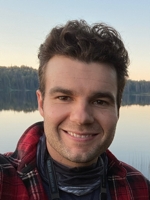
The Sound of Living Water
by Nicholas Crane Moore
Nicholas lives on accumulated glacial sediment at the foot of the Chugach mountains near the mouth of Furrow Creek.

I was asleep during my first trip through Prince William Sound. At the end of it, as the M/V Kennicott docked briefly at Whittier, I set foot on mainland Alaska for the first time. I would not know the significance of that step for many years, but I immediately perceived that I was entering a world very unlike the one I had come from. Though the darkness of dawn obscured their true immensity, I sensed that I was surrounded by a wall of mountains. Just beyond the light of the ferry terminal, a row of large conifers lurked in the shadows. Rain seemed to come from all directions, discouraging further investigation, so I made my way to Anchorage.
During subsequent years, return trips to the Sound would reveal an alien landscape in which the divide between land and water, so reliable in most places, nearly disappears. Nothing embodies this blurred boundary as overtly as the Sound’s tidewater glaciers, but ambiguity permeates the entire region. Roughly 2,500 miles square, the Sound contains nearly 4,000 miles of coastline—a length derived from the myriad coves, peninsulas, and barrier islands that distinguish this convoluted inlet from the vast blankness of the Pacific. Seawater invades narrow fjords, carves glaciers, swallows beaches. Tides wear away at the land with the accumulated patience of millennia, slowly expanding the reach of the sea. Spruce and hemlock cling to cliff edges, their seaward roots exposed; floating driftwood timbers foretell the loosening of their grip. Even where solid earth is available, water is omnipresent. Creeks drain the forested slopes of their share of 150 inches of annual rainfall, which pools in meadows and renders undergrowth so consistently wet that I’ve been drenched while hiking on a sunny day.
It is this proliferation of fresh and marine water that gives Prince William Sound its defining richness of aquatic and terrestrial life; and it is this water that made it vulnerable. On a spring evening more than 30 years ago, the nightmare, long-feared, finally came to pass: The Exxon Valdez, carrying 53 million gallons of North Slope crude, ran aground on Bligh Reef, spilling one fifth of its cargo. Conveyed by the current, oil drifted into the furthest corners of the Sound. The devastation was beyond measure; that oil slicks were observed nearly 500 miles from Bligh Reef gives some hint at its scope.
After the spill, observers quickly assigned blame to the responsible parties. National media tended to dwell on the most compelling character—the alcoholic captain, Joseph Hazelwood, who had bizarrely left command to a subordinate in a critical moment—and in so doing provided the public with the most simplistic, anomalous explanation of what had gone wrong. For Exxon, the important question was not blame but liability. In the legal proceedings that followed, studies assigning a price to a dead sea otter ($11,500) or puffin ($308) rendered plain our society’s inability to assess the value of life.
A basic assumption underpinning the legal wrangling was that tragedy could quite easily have been averted, so long as the ship’s crew had simply managed—as they had on every previous occasion—to avoid Bligh Reef. “The cause,” wrote the trial judge, “was pure and simple human frailty.” But framing the accident as solely the product of navigational negligence ignores the larger, more complete picture, and minimizes the number of humans whose various frailties were implicated. Any sailor can make a wrong turn, but it takes a collective set of value judgments to send bulging oil tankers through the aquatic paradise of Prince William Sound. The judge acknowledged the more complex reality when he wrote that “Exxon officials well knew that oil and fisheries could not mix with one another” and “that carrying huge volumes of crude oil through Prince William Sound was a dangerous business.” But Exxon officials were not the only people who knew this. On some level, we all did.
Even before it crept from beach to beach like the grim reaper, the oil that visited death upon the northern Pacific had traveled a long way. Prior to being loaded onto the Exxon Valdez at the ship’s namesake port, it had journeyed 800 miles through the Trans-Alaska Pipeline, then in its twelfth year of operation. Flowing south from the state’s northernmost edge, this batch of unrefined crude traversed a wilderness of forest and tundra, passing over lakes and creeks just beginning to thaw. It crossed three mountain ranges and the third-largest river in the United States. It made the trip in four days.
Long before this oil was processed and loaded into the pipeline at Prudhoe Bay—before it coated bald eagles and sea otters in Prince William Sound, producing images that horrified the world— it had been lying 9,000 feet underground for longer than humans can meaningfully conceive. For only a fraction of this time, humans have endeavored to extract it. Petroleum and its derivative products now undergird much of American life. Oil propels our vehicles, our industries, our products. It also spreads through water like poison. All of this—the depth of our desires, the gravity of their risks—was known in 1968, when oil was struck and celebrated at Prudhoe Bay. It was known in 1977, when the pipeline was completed. It was known the night of March 23, 1989, as the Exxon Valdez left Valdez harbor bound for Long Beach.
Oil spills, like car accidents, are inevitable. There are simply too many things that can go wrong for all of them to go exactly right, every time. It is convenient to forget this fact, but periodic events, like the recent pipeline leak off the coast of California, have a way of reminding us. The people of Prince William Sound have never forgotten.
By many metrics, the Sound has recovered. Populations of sea otters, bald eagles, and common loons now equal or exceed their pre-spill estimates. Pink salmon run in large numbers, and harbor seals are a common sight. Oil-soaked birds are only a traumatic memory. But anyone who remembers the days before the spill can tell you that things are not the same. Some species have not yet rebounded; some, like the killer whales and the once-great schools of herring, never will. Hidden under rocks, buried in gravel, broken down into small but stubborn particles, oil remains.
Exploring the Sound today, one does not see obvious evidence of the spill. More readily apparent to most visitors is the region’s resemblance to their vision of pre-European North America. Walking through the hemlocks in late summer, a multitude of blueberries and salmonberries present themselves for picking. Mushrooms the size of one’s hand grow along the trail. Enormous salmon crowd creeks narrow enough to step across, wriggling upstream. The experience evokes Eden.
This abundance of life—specifically, its edible and nutritious character—reminds me that mankind’s dependence on the land was not always as attenuated as it is for most Americans today, filtered through a long, dispiriting sequence of industrial transformations. People ate what they picked, cooked what they caught and killed. As I walk near the shore, filling my belly with wild berries, I begin to imagine, even fantasize about, living as all humans once did—intimately connected with nature, reliant on senses that modern life has dulled. I then think of the frigid winter days, the many months without berries or salmon, the avoidable challenges and discomforts of such a life. I think of the heat that warms my Anchorage home, and I think of its source: a reservoir of fossil fuel beneath Cook Inlet.
The crude oil spilled by the Exxon Valdez is no longer, at least directly, the gravest threat facing Prince William Sound—climate change has begun to disrupt its longstanding pattern of life. The entities responsible for the Exxon Valdez—those involved in the production, regulation, and transportation of fossil fuels—are again targets of public ire, this time for the consequences of a later phase in that process. Without doubt, producers of energy must adapt, quickly and dramatically, to address the crisis at hand. But it may also be time for those of us on the other end of the supply chain to ask ourselves whether we can still afford to view our consumption as having only a distant connection to the oil spills and heat waves we lament. We might ask, in other words, whether the Exxon Valdez was really just the fault of one incompetent captain. The truths to which these questions lead are likely to be painful, but we no longer have the luxury to avoid them.
Perhaps the fishermen of Cordova have shown us a way forward. In the hours and days after the Exxon Valdez hit the reef, it became apparent to the fishermen of Cordova, who make their living in the waters of the Sound, that no relief was imminent. A thick mat of oil was speeding toward the shallow bays where millions of tiny, vulnerable fry were developing into the next generation of commercial salmon, but no help was on the way. So a small fleet of fishermen, taking whatever gear they could scrape together, headed out to try and stop it. That they succeeded to a surprising degree is in some ways beside the point. Faced with nothing short of an environmental catastrophe, one that threatened their livelihood, their home, their beautiful world, the fishermen of Cordova took action. They asked not who is responsible, but what can we do. They knew they had no other choice.
© Nicholas Crane Moore
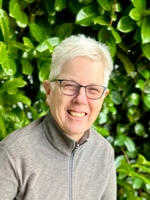
Close to Satsop River
by Kate Stannard
Kate lives on the traditional land of the Coast Salish people past and present in the Duwamish-Green Watershed, five minutes from the shores of Puget Sound in West Seattle.

Downstream from Schaefer bridge,
on a stretch of
mud and rocks,
I find you
alone,
lying parallel to the creek.
By the looks of it, death came
too soon.
You held on with each tug from the river,
when the water and wind,
the lungs of the earth,
came for you.
Unable to help,
I sit on your body, a long rough
pew of wood skin
and close my eyes.
We take in the spring sun,
together.
Looking like tributaries,
an unexpected flood tore at your young roots,
unearthing you.
It shortened your top to a nub,
and broke two of your branches.
In a few months, salmon
will swim against this current,
you a witness,
your new body forming a deep pool
for them to rest,
a pause for the long journey.
© Kate Stannard
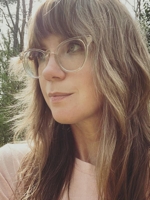
Trash Birds
by Shannon Finck
Shannon writes near the South River Forest in a city which occupies Muscogee/Creek territory. Her watershed is Sugar Creek, where she saw her first green heron.

1.
Above:
thin slip of starlings
shiver up a skyscraper,
in and out of sun on glass—
seeing through them,
but not the immaculate seam
of synchronized flight.
The windstressed flutes
of their bones beneath
iridescent breasts
seek a nestle, an eave
where there are none.
This killing brutalist building.
2.
Below:
sparrows—vagabonds
of parking garage
and shopping cart,
eat cigarette butts,
learn not to see
their own reflections,
not to flail against the question
of what real is—birds
or images of birds abstracted
by the city’s austere shimmer,
a glittering, high-flying, perfect
right angle. A drone.
© Shannon Finck
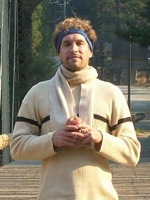
Still Pink Form: A Meditation on Hunger
(Tampa Bay, Florida)
by Paul W. Jacob
Paul (Jake) lives nomadically with his wife Jess. They met and were married along the Ashland Creek Watershed in Southern Oregon. The original land stewards of this beautiful area in the midst of the Siskiyou Mountains were the Shasta people, or "Kahosadi," which can be translated as plain speakers.

Down in the mangrove,
a roseate spoonbill
stands hunter still
on what looks like
one tall, thin leg.
At sunrise, the spot it wades in
was a spongy tan land oasis
bustling with scads of minuscule
side-walking black crabs.
Now, the tide is in,
sheltering oysters and conch
under its dull, milky, undulating late morning shimmer
that flows and heightens effortlessly
in between the clumped together spider-leg root stalk
planted in the tepid tidewaters.
Beyond the tree line,
within earshot of traffic
traversing the slender I-60 isthmus
of black heat-wave concrete,
several marine grey dorsal fins
breach the surface of the saline shallows
in a playful circular formation.
All these worlds, this organic drive,
occur beyond my 6th floor window:
the air conditioning, smoked salmon, and jazz records.
Still, almost imperceptible
in the silky blond spring light
among the lush, tangled mangroves,
its pink, slender, stoic form,
a roseate spoonbill stalks the drowned oasis,
waiting, for a shadow
to move into the light
of its hunger.
Previously published in the author’s collection: Nomadic Devotion: A Contemplative Inquiry into the Poetics of Place.
© Paul W. Jacob
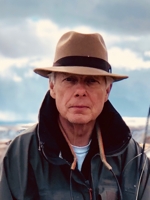
Where The Yellowstone Flows: Billings
by James Johnson
Jim paddles the lakes and rivers of the Souris Red Rainy Watershed in the summer and walks the streams of the Driftless Area of the Upper Mississippi in the spring and fall. His grandparents homesteaded on Whitebird Creek, tributary of the Stillwater River, tributary of the Yellowstone.

near Billings
the horizon sagging like powerlines
tangled in oil refinery rigging
and all that cattle congress fencing
the Yellowstone
descending
through layer after
geological layer
eras rolled out like hog wire
even carp catfish paddlefish
finning in the conflicted currents
where prehistoric red scruted fish
preside
caught a catfish once
moustached like a lawman
with shock spined fins and
black skin
peeled off
with pliers revealing
meat as white as a black bear
on an old glass plate negative
back when
in the Park
had what were called bear jams
you see a tourist would see a bear
stop
get out of the car and leave
a sandwich on the front seat
the door open
and wait with a camera
for the bear to paw down that sandwich
then sit back
behind the steering wheel
black bear in black Model A Ford
like he was really going somewhere
toward another century of progress
and the cars backed up behind
horns honking
like New York City traffic bleating
confused as ewes newborn as lambs
that was what we called
bear jams
river crooked rapid containing
sawyers as to run with its bottom up
too thick to drink
too thin to walk on (M Lewis 19 May 1805)
where the Yellowstone flows
near Lockwood
flooding scoured river bottom
exposed Silvertip pipeline
we fell in with two brown or yellow bear
which we wounded
one made his escape the other pursued me
so closely until
we again fired and killed him
the legs of this bear longer than the black
(M Lewis 29 April 1805)
breaking
releasing crude
spilling oil into
twenty five mile long slick
raging downstream toward
the confluence
the Missouri
scoured river bottoms
debris
spreading oil
into pastures
now seeping into furrows
where crops wilted even weeds could not stand up
fifty thousand gallons
spilling soiling oil
© James Johnson
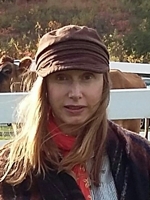
Saying Goodbye
by Sally Nacker
Sally lives a quiet life in a small house in the woods of Redding, Connecticut, part of the Norwalk River Watershed. Here one finds wetlands, streams, ponds, trees, the Norwalk River flowing south to Long Island Sound, and wildlife.

If my heart arrests, let it keep arresting.
I kept thinking of your willed words
as I walked one last time that spring
to your summerhouse. Birds
hopped and sang in the thickets on either side
of Veery Lane. The green
world trembled so bright I cried.
At the end of the long lane
the small, screened-in wood
house stood. Something fluttered inside it
like a large moth, or could
it be a bird, I thought
as I came closer. I saw then—
its nervous movement through the screen—
a little brown house wren.
I propped the door open between
the green world and the world inside,
stepped in, and drew
close to the frightened thing, tried
to guide it toward and through
the opening. I could tell
the wren’s small heart was beating
wildly, could see its little eyes, so gentle.
Then off it flew into the trembling.
© Sally Nacker

Unmarked Trail
by Prabu Vassan
Prabu lives in the Hudson Valley of New York near the river named Muhheakantuck by the Lenape and later the Hudson by the Dutch.

A band of waxwings, dark against
The raw gray, arcs into
The darker heart of the pines…
This is where the trail peters out:
Rocks darkening, dry creek bed
Turning grain by grain to a stream
Of ash, every creature curled up
In its den of dirt, root and silence.
And the salt wave of loneliness
Heaves through over and over,
Each time wearing away
A little more, whole hills of pine
Abraded to a charcoal smudge.
There’s now the calm of forms
Worn down, the repose of things
Having outrun and outfoxed
Their names. There’s a small clearing,
As of dry grasses crushed flat
Where something bedded down
For the night, a quiet, as of hollows
Pawed out of the earth.
© Prabu Vassan

Accidental Bees
by Anna Sims Bartel
Anna stewards 72 acres of Northern Allegheny Plateau, where the hemlock forest teaches her about anticipation of grief; healthy beeches next to diseased ones offer lessons of strength in diversity; the steady seeps on the ridge embody the basic generosity of our planet, as they feed into the upper Six Mile Creek watershed and from there into the Ithaca Reservoir and into us.

In winter, my friend called
To ask if I would help keep bees.
Of course, I said, thrilled
With the invitation to care for
Something, to help heal a wound.
But she was too busy and I
Was too busy and the time to order
The necessary three-pound package
Of compact and likely angry bees
Came and went.
She took the hive boxes
And stacked them in the field,
Behind the hoophouse and compost piles,
Where they were found by wild bees,
Unasked for, an obvious grace.
To our busy they brought their
Own, mocking our excuses, our arrogance
In thinking bees depend on us.
Like the hummingbird and other
Miracles, all they needed
was the stage,
the open, the waiting.
© Anna Sims Bartel

Bean Germination
by Anna Sims Bartel
Anna stewards 72 acres of Northern Allegheny Plateau, where the hemlock forest teaches her about anticipation of grief; healthy beeches next to diseased ones offer lessons of strength in diversity; the steady seeps on the ridge embody the basic generosity of our planet, as they feed into the upper Six Mile Creek watershed and from there into the Ithaca Reservoir and into us.
The first step is moisture
Surrounding, permeating,
Swelling the seed
The skin splits
The seed fractured by its own
New growth,
A root spearing downward
For days, it works down deeper
Then small lateral rootlets
Move out, stretching sideways across soil, an anchor, or a cross
More rootlets, more claiming of space and belonging,
The plant thinks of emerging into air
It grows, of all things, a spine, a stem
And uncurls like a yogi
Up into light,
It sheds the last brown wrapper of its past
And realizes it wants arms
They snake out from the sides and
Unfurl like wings, grace, movement
A miracle, a solar catchment
An innovation of light
Only then, with wings dry and stable
in its anchor bed of earth,
Does it imagine fruit.

© Anna Sims Bartel

Requiem
by Eric le Fatte
Eric lives at the edge of a forested park half the size of the Hundred Acre Wood. It is near the confluence of the Tualatin and Willamette Rivers, and on clear days the peaks of the Southern Cascades send him their greetings

Nothing is broken
that can't be repaired.
Through the tuning of light
to the lean of the earth,
the fix is in.
Bulbs of perennials birth prisms;
buds on branches become
thousands of lenses.
Where to place the eye?
Turn the dial and hear
that nothing is broken.
The trees are singing,
the songs are building nests,
the nests are taking notes,
and the notes are flying.
If you were here
you could follow them skyward
and beyond,
where nothing is broken
that can't be repaired.
© Eric le Fatte

Start
Mapleton Preserve, New Jersey
by Maxine Susman
Maxine lives in Kingston, New Jersey, near Heathcote Brook which feeds the Millstone River watershed, on former farmland that was once a Lenape settlement.

From one day to another.
Yesterday, not. Today
spring peepers blast their pipes from the bog—
year after year I’ve never seen them,
tiny hidden creatures
visible only in their noise
raucous swells of it, playing
hide-and-seek among the water-sodden
tree trunks. They blurt and spill
to one another in no pattern
I can as a human discern
but something makes sense to them
the kind of sense
in having a sound to make
and listen for,
send back and forth among swelling throats.
Something pumps them up
keeps them going
for a couple of joyous weeks
then spring overtakes them and moves on.
© Maxine Susman

Destination
by Maxine Susman
Maxine lives in Kingston, New Jersey, near Heathcote Brook which feeds the Millstone River watershed, on former farmland that was once a Lenape settlement.

I want a good night’s sleep. I mean five hours plus.
I want to go to Alaska in bed, to go to bed in Alaska,
see tundra and taiga and moraine, see Denali
prepare for spring when it’s summer somewhere else,
sleep in a hut under wilderness sky,
to dream Alaska,
be in Alaska, go hunting and fishing for Alaska—
not me alone but people I love, even strangers
who’ll see white land and dark sky
somewhere else but someplace real—
I want time, money, and sleep to find it
but I’m lucky in the places I don’t have to travel,
not like the teenager and her baby
wrapped in a blanket on the Times inner page
who just wants to sleep, she and her baby,
get a night’s sleep in a bed in a room,
it doesn’t have to be Alaska.
© Maxine Susman

Cardinal Direction
by Shangri-La Hou
Shangri-La lives near the headwaters of the Peruque Creek watershed in eastern Missouri, where Northern Cardinals and other birds start to sing again in the spring. She has fond and fresh memories of where she used to live on the Rio Grande—a home that resided in the grand expanse of desert and bosque leading up to the Sandia Mountains.
I’m no ornithologist. But when you’re wading through
shin-deep snow with no jacket, no manufactured layer differentiating
you from your wildness, you become the same as all of the other animals
in the last reaches of winter: waiting out that singular purpose of survival.
If some other Bible-bound man saw you running out, eyes widened upward,
he’d say you were looking for God in that infinite and thawing sky.
Could you prove him wrong? Your eyes dart from red to red on coniferous green,
the searching like a drawl the tongue holds against the hungry cave of its mouth,
or the patient pushing, every year, of bird song against silence.
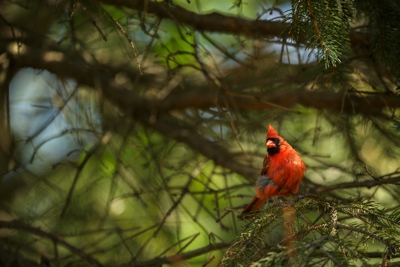
© Shangri-La Hou